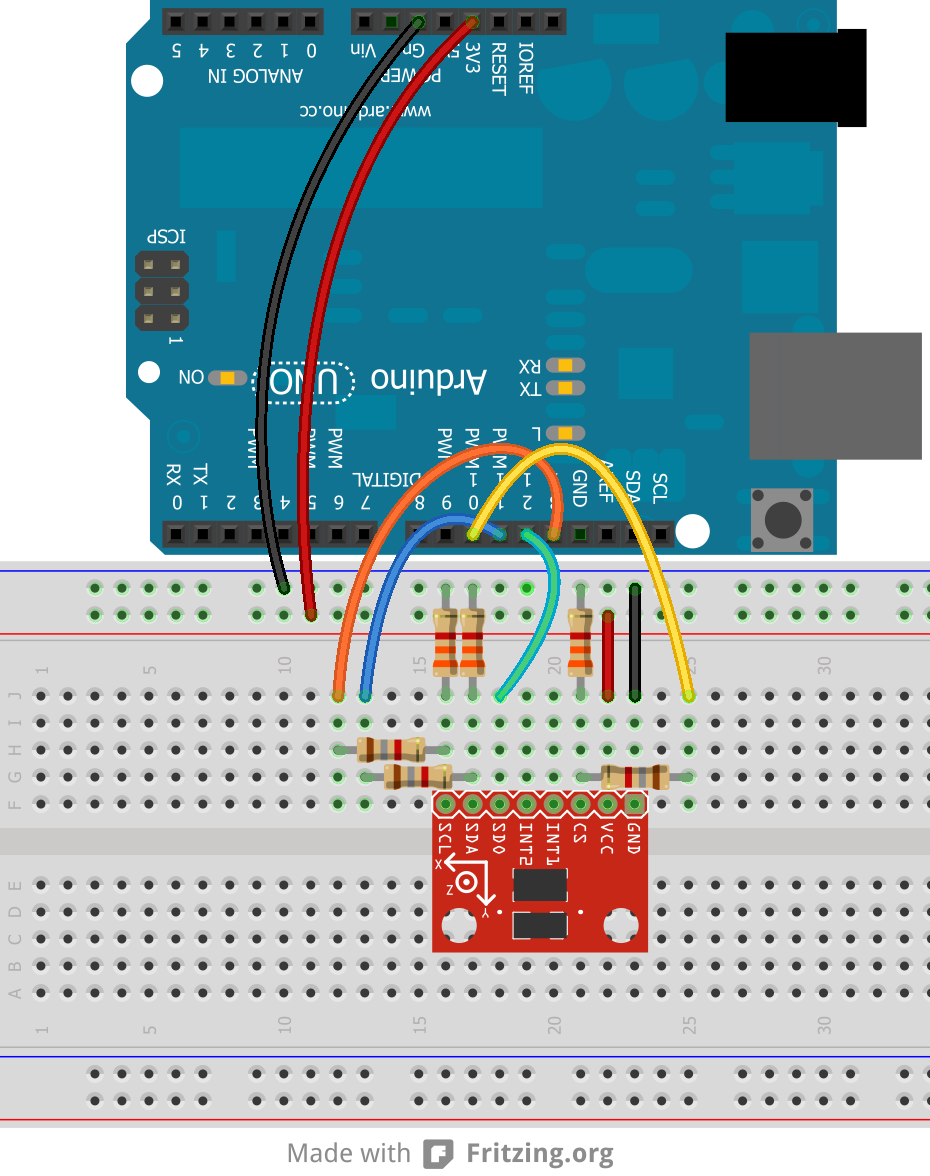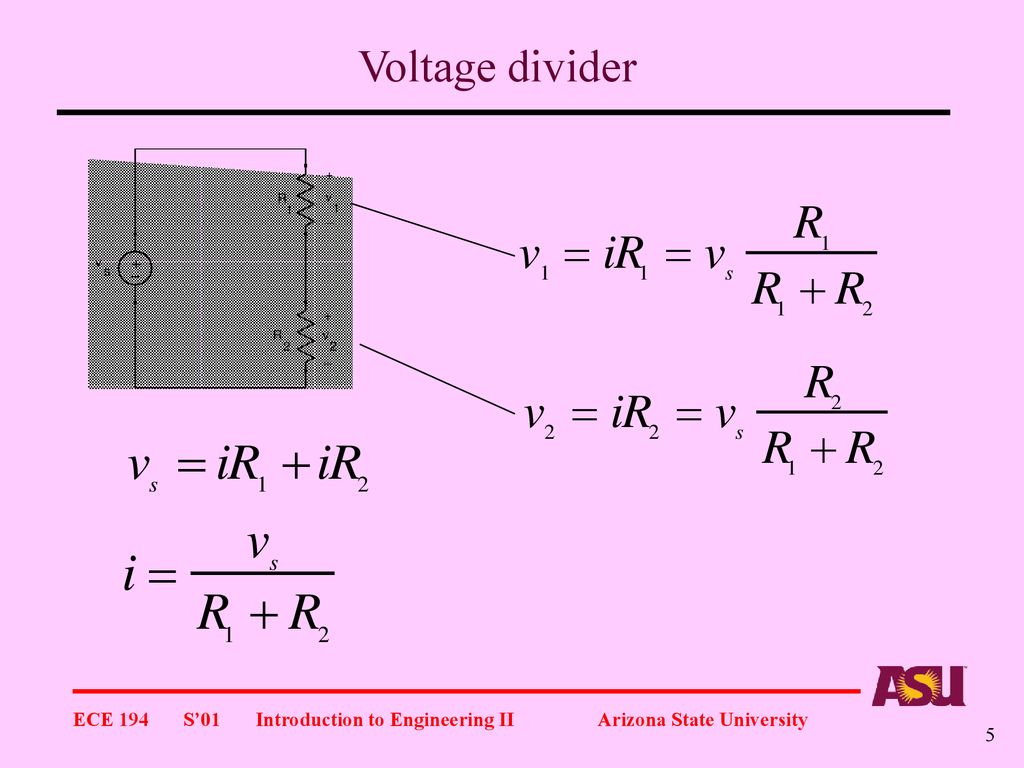Voltage Dividers Doing the things Circuit Diagram Once you understand how a voltage drops over a resistor, you're about halfway done with understanding a voltage divider. If you need a voltage lower in your circuit than the voltage that is provided by your power source, you can use a voltage divider. a potentiometer is a voltage divider that changes the resistance values depending on A voltage divider is a simple circuit that can reduce voltage. It distributes the input voltage among the components of the circuit. The best example of a voltage divider is two resistors connected in series, with the input voltage applied across the resistor pair and the output voltage taken from a point between them. It is used to produce different voltage levels from a common voltage source

Circuits that consist of voltage dividers allow many voltage levels to be generated from a single voltage source.This source may be a voltage of +5V, +12V, -5V, or-12V, or it may be a negative voltage with respect to ground (0V).A dual supply, consisting of positive and negative voltages such as ±5V or ±12V, is another option.. Voltage dividers are sometimes referred to as potential dividers.

Understanding Resistive Voltage Divider Circuits through Calculations Circuit Diagram
For a voltage divider, understanding how the voltage gets divided across the resistors is directly linked to Ohm's law. Let's consider the current flowing through the circuit. Since the resistors are in series, the same straight resistive track. The output voltage is adjusted by sliding the wiper, typically controlled by Voltage Divider. The two resistor voltage divider is used often to supply a voltage different from that of an available battery or power supply. In application the output voltage depends upon the resistance of the load it drives. where is the parallel resistance of R 2 and the load resistor R L. For : R 1 = Ω, R 2 = Ω, and V 1 = V,

In electronics, a voltage divider (also known as a potential divider) is a passive linear circuit that produces an output voltage (V out) that is a fraction of its input voltage (V in). Voltage division is the result of distributing the input voltage among the components of the divider. A simple example of a voltage divider is two resistors connected in series, with the input voltage applied One final point about capacitive voltage divider circuits is that as long as there is no series resistance, purely capacitive, the two capacitor voltage drops of 69 and 31 volts will arithmetically be equal to the supply voltage of 100 volts as the two voltages produced by the capacitors are in-phase with each other. If for whatever reason the Understanding Voltage Dividers. A voltage divider is a simple yet powerful circuit that generates a specific voltage output from a higher input voltage. It is achieved using two resistors connected in series across a voltage supply. Vin is the input voltage. R1 is the resistance of the first resistor. R2 is the resistance of the second
